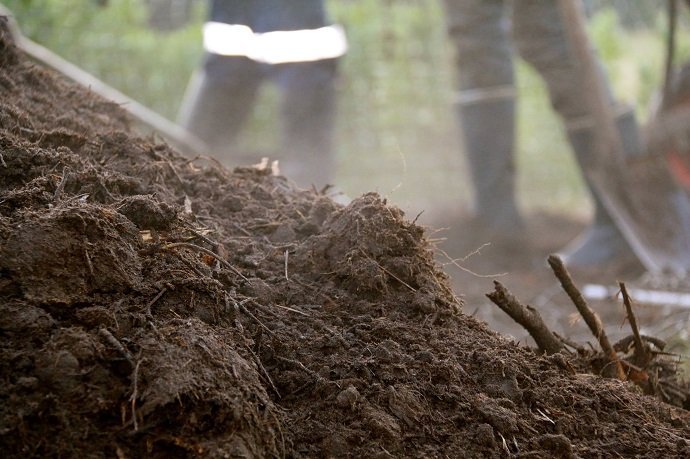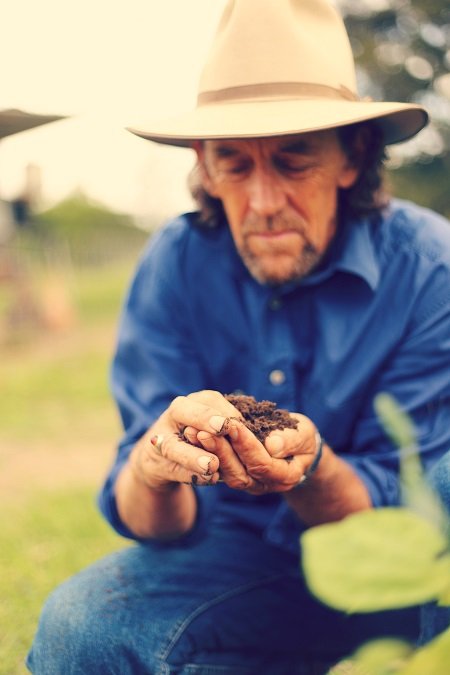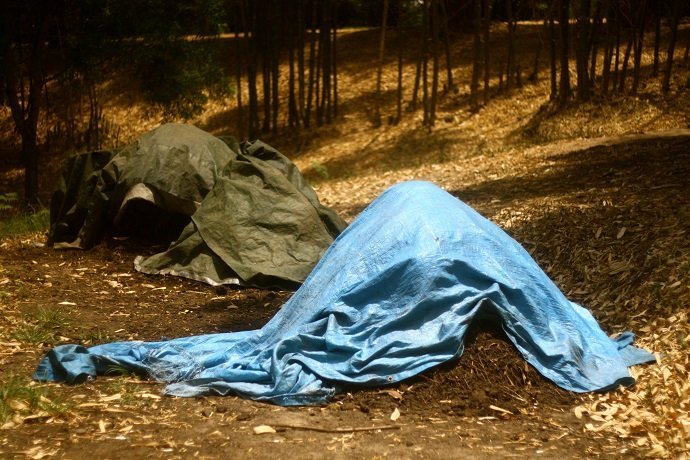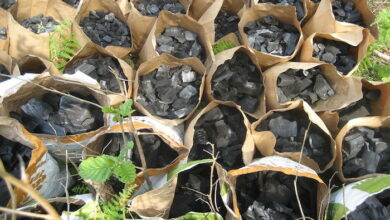
All terrestrial life depends on soil, directly or indirectly. Although our understanding of topsoil has grown by leaps and bounds over the past decades, we are still losing this invaluable resource at a frightening pace.
Less than thirty per cent of the world’s topsoil remains in fair or acceptable condition. The fragility of this vital layer can be illustrated through a simple comparison: if one imagines the earth as an orange, the extremely thin topsoil layer is no thicker than the shine on the skin of that orange. An astonishing variety of creatures rely on this ‘shine’ for all of their basic necessities.
Our growing knowledge about soil has formed the basis of new soil services, soil analyses, and many well-intended soil conservation attempts, yet we are still losing soil at an ever-increasing rate. If this trend continues for much longer, our current form of society will eventually collapse – and mainly as a result of practices as simple as over tilling.
At the same time, soil is being damaged irreparably by salinisation, for example resulting from the clear-cutting of forests that are often far away. There are only a few places in natural systems in which soils are well conserved: uncut forests; under shallow lakes and ponds; native grasslands populated by perennials; and mulched and non-tillage agricultural production systems.

A sustainable approach
Although this situation may seem extremely gloomy, there is hope in the form of numerous sustainable approaches to soil reconditioning, maintenance and rehabilitation. Surprisingly, amateur gardeners and farmers – not scientists with big fancy labs and federal research grants – are doing most of the real research. Moreover, these people are achieving results: creating high quality soil through water control, modest aeration, and the assemblage of specific plants and animals. And this is done with careful consideration of the sequence of these treatments.
The crucial importance of soils is a direct consequence of the key role they play in supplying us with our most basic needs, especially food. Accordingly, special attention must be paid to soil cycles. In any assessment of sustainability, the only way to gauge on-ground success is by assessing the stability of soils: farming practices are only as sustainable as the soils they are on. For our long-term wellbeing, we must do better than simply maintain sustainable soil; we must mend the damage we have already done. Agricultural practices must improve both the quality and quantity of soil.
A truly sustainable system should not take a tremendous amount of labour. This is not just about efficiency: if sustainability in a system relies on extensive human inputs it is too fragile to be considered truly sustainable. A sustainable system must ultimately be self-regulating.
Improving soil
There are two approaches to improve soil quality and increase soil quantity.
Manage water
The first approach focuses on water and the compounds that dissolve in it. Water may vary in pH, and that may change while it dissolves and deposits compounds as it passes through the soil, subsoil and strata. Additionally, groundwater can carry elements both downwards and upwards when aquifer pressures overcome gravity. For example, under flood conditions, groundwater rises, increasing aquifer pressure, and the aquifer feed of a distant spring may increase, causing upward flow.
Water also flows down and across landscape profiles. By following the form of the landscape, water and the elements dissolved in it can travel great distances.
This laminar flow of nutrients is common within the topsoil, and the higher subsoils of the landscape, rather than the lower strata. Because this flow happens so close to the surface of the earth, it carries both inorganic elements (derived from deep within the earth) and organic compounds (derived from living or once-living organisms). A vast array of minerals and molecules are concentrated and redistributed across landscapes by the natural flow of water.
However, we can change these flows to accomplish soil sustainability goals by harmonising our activities with the patterns of landforms and focusing on the accumulating, slowing, spreading and soaking of water as a self-regulating water distribution system.
Swales – water-harvesting ditches on contour – are an excellent example of harmonisation. They slow water down to a standstill, eliminate erosion and let water infiltrate the surrounding area, while recharging groundwater and preventing waterlogging. Swales also fill dams, collect eroded soil, create new soil and grow vegetation. For more info on building swales see https://www.permaculturenews.org/?s=swales
Encourage living organisms
The second approach focuses on living organisms, their metabolic rates and the broader systems of life, such as food webs. All living organisms derive nutrition from their environments: plants pull nutrients from the soil and air; animals consume plants. Manures are comprised of various elements.
Water also flows through animals. For example, cows consume enormous amounts of water, which passes through and comes out as nitrogen-rich urine, with many other dissolved compounds. This urine is distributed throughout the landscape, which can be an enormous benefit to soil quality.

Animals also build their complex bodies – bone, flesh, muscle, brain and other tissues – from nutrients derived from food and water. When they die, natural forces – such as predators, scavengers, decomposers and even aquifers – distribute the compounds from which they are comprised across the ecosystem.
By focusing on the aspects of this massive matrix of factors that are within our control, we can direct the management of animals through our systems so that beneficial organic compounds are reincorporated naturally.
Alternatively, we can take advantage of these concentrations of organic compounds as the basis for organic farming: organisms, and their waste products, make terrific fertilisers. Practical applications include: worm farms, chicken tractors, chicken composting systems, compost, cover crops, small and large animal manures, animal deep litter yards/straw yards, compost teas, bio-fertiliser and biochar.
Mulching is another great organic soil additive, and suitable materials include hay, straw, leaves, grass, stone, sawdust, bark or wood. It is best with fifteen centimetres of material covering the soil. Mulching adds plant nutrients, buffers soil temperatures, prevents erosion, promotes soil life, retains moisture and restores soil structure.
Organic farming
Farmers around the world employ a diverse assortment of organic farming practices. Diversity is a theme of organic farming at many levels. Even monoculture organic farming is giving way to more diverse approaches, and for a good reason: diversity must become a central part of any attempt at achieving sustainability. Intrepid farmers are farming cows with chickens, and chickens with sheep; some are growing crops and raising animals together, allowing the natural by-products of livestock to enrich the soils in which crops are grown.
When people assemble these combinations, through the process of trial and error, they are determining progressively more sustainable approaches. Diversity-based techniques are both better for building soils and are able to more efficiently use resources within a system. Land is being improved in the long-term, while product yield is increased in the short-term.
Natural ecosystems are complex, but by manipulating this small set of elements – the context in which plants and animals are cultivated – sustainability is possible. There are many other elements: soil organisms regulate countless processes invisibly; macroscopic wildlife leaves its own marks while passing through.
Responsible use of land
To optimise our sustainable use of the landscape, we need to use all land responsibly. By some estimates, we could meet our needs from a total amount comprising thirty per cent agricultural land and seventy per cent forest.

Agricultural fields could grow crops and graze livestock. Production forests, could grow trees and support foraging. Ecosystem processes supported by natural forests make sustainable clearings for the purpose of permaculture crops and pastures much more productive.
The permaculture model of agriculture uses perennial tree systems to support crops and pasture systems. This large-scale blend of land uses promotes healthy soil profiles by increasing both its quality and quantity. However, we can also adopt such a strategy on smaller scales if we focus on the natural processes that occur in forests and other ecosystems.
Garden-scale
Soil can be augmented completely in a garden or on a small parcel of land. Gardeners can apply treatments to each square meter to easily and rapidly build soil: by applying compost, mulch, and beneficial biologically rich liquids such as worm farm juice, compost teas and bio-fertiliser. This can build a rich soil biota, while adding organic matter to create up to twenty-five millimetres of soil each year. Doubling the application of organic matter doubles the amount of new soil, sustainably. Unfortunately the intensity of compost applications at a larger scale requires a prohibitive amount of material.
Working with nature
Responsible farmers must take full advantage of the ecosystem processes that have been building soils for millennia. By permitting the majority of a landscape to be governed by those larger ecosystem processes it becomes far easier to achieve soil sustainability on an agricultural scale.
We must now collectively submit to the natural creative forces that have given us the soil we take for granted today. It is our social, humanitarian and moral obligation to implement systems that create soil at rates comparable to those produced by the natural ecosystems of the earth.

This article originally appeared in PIP Magazine, Issue Four – Spring 2015.













Im trying hard at my place
Hi, we’re new to Permaculture and soil building but we’re trying! Thank you for the inspiration and guidance! XX
Hi and thank you all for this great info on carrying for mother earth soils. I have been seriously involved in getting and keeping soils free of foreign debris and litter along with trying to learn how to better my lawn and get more earth for It I think. Thanks